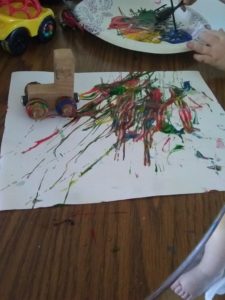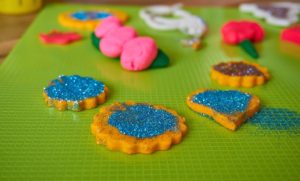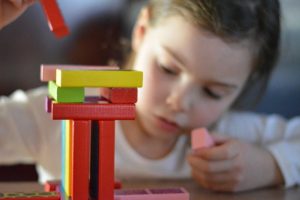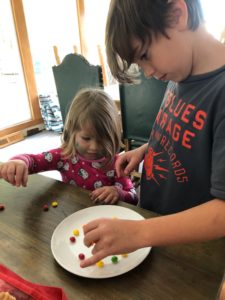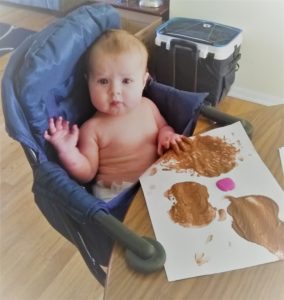Updated December, 2021
This time of year my fridge is covered with art. Pumpkins, ghosts, turkeys, wreaths, trees, the works. And selfishly, I have to admit, I love it. I love when my little ones bring home artwork that has a solid feel to it. I love the little turkey hand prints and the pretty Christmas wreaths. Of course the benefits of art for children are measurable. But we have to admit, not all art is created equally.
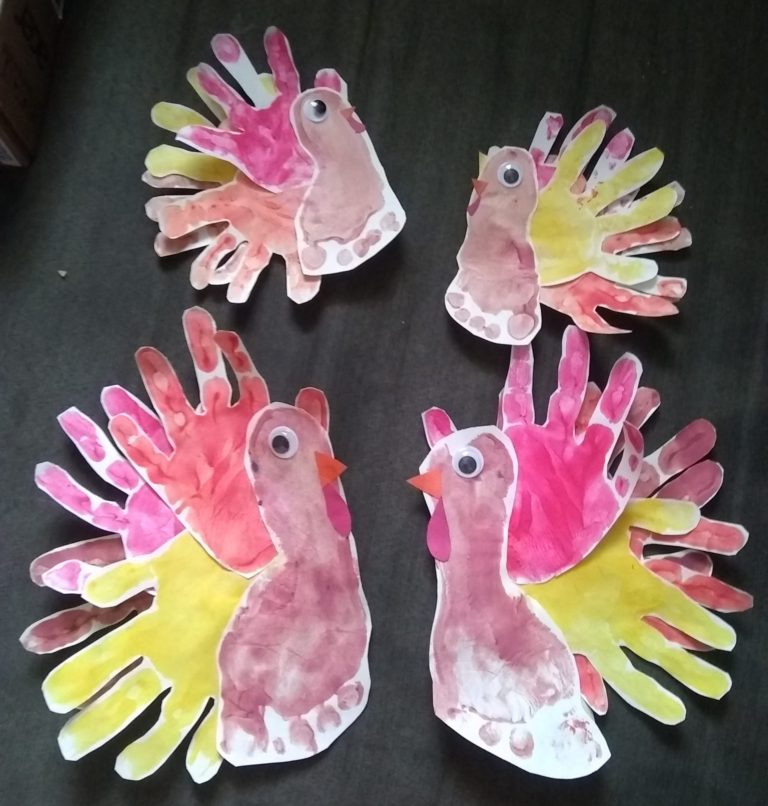
Product Art
Product art is the type of art where the end result is a very intentional product for you to hang on your fridge. And as I said, I have tons of it in my house! I can’t help it; I think all parents love that kind of art. The nice pieces that can be displayed, or kept in the books for later years.
To be clear, product art is really about the parents. It’s about the adult in the room. Having something that they can appreciate. The only thing your child is really getting out of this type of art is the practice of following directions and sometimes a small sensory experience.
Examples of Product Art
You can easily and often spot product artwork at schools or in Early Learning Centers. When you have an entire wall of artwork and everyone’s work looks pretty much the same? Yeah, that’s product artwork. You know where else is super guilty of making tons of product artwork? Pinterest. That’s right, that cutsey social media site is stuffed full or product art.
I can admit, I’m not exactly a saint in the product art department myself. I do hand print turkeys and foot print trees every year. I cherish the ornaments that my children have made for me over the years. And I think it’s realistic to say that you will too.
The Failings of Product Art
Obviously, my goal is to warn you away from product art. But I must admit, being a teacher for a number of years, there are some things about product art that are more detrimental than others. You see, because there is a ‘correct’ final look, product art is where you get the adult hovering, closely overseeing the child’s work. They will tell the child where to put the nose, or what color to make the hair. I’ve even seen children be scolded for not doing it the way it’s supposed to be done. It is seeing this behavior that is why I am particularly anti-product.
If the adult is correcting the child, whose artwork are you really ending up with anyway? I’ve seen a child glue an ornament to a tree just to have the teacher pick it up and move it. I’ve seen teachers hold a child’s hand to make them place the cotton ball in the middle. Honestly, the biggest failing of product art in my opinion is the shame and sadness. Art should be a joy, an experience, and something fun. If making art is stressful for anyone involved, you aren’t doing it right.
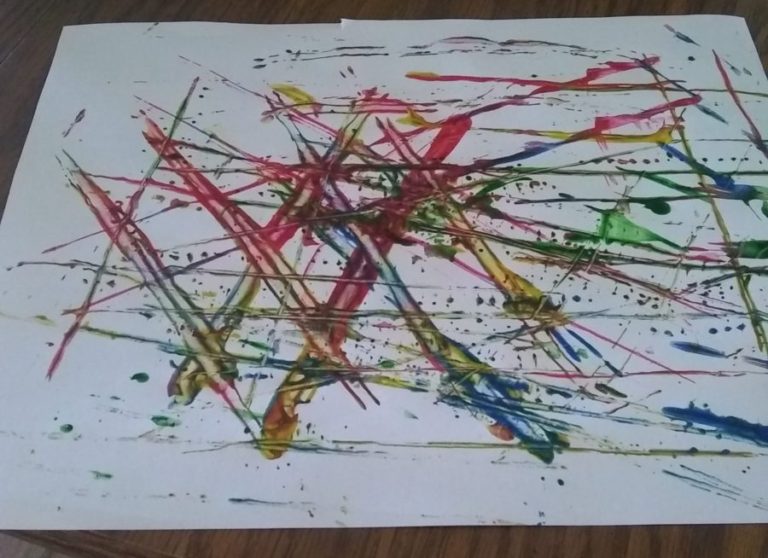
Process Art
Process art is exactly what it sounds like: art for the sake of doing art. This is the messy, sensory heavy art. It is art that doesn’t have an end result, or at least not everyone’s art looks identical. This is the art they learn and explore with, making decisions, mistakes, and planning (or not!) what they are going to do.
Process art is full of learning and is open ended. Children explore, question, and experiment. How much glue do you need to hold on a pompom ball? How do you make lines and shapes together to be a single person? It doesn’t need to be closely supervised and there is no right or wrong way to do it. It is meant to be open ended.
Examples of Process Art
My examples of process art are pretty much endless. This is because it can be as simple as giving your child markers and paper. Sure, I have some of my suggestions: car painting, edible playdough, even painting onesies. But you should never limit yourself. Give your child a topic, or don’t, and just let them explore.
Merging Product and Process
There is an easy way to merge product and process art. Remember, the biggest drawback of product art is that everyone’s art looks the same. But that doesn’t mean everyone can’t have the same task. Process art can still have a direction it is moving in. Maybe the goal is to draw a house and family, or even a rainbow. Well, everyone’s work is going to look different because they are given the freedom to make choices. The focus isn’t about the rainbow at the end, the focus needs to be on the experience that gets you to the rainbow.
One of my favorite product/process projects to do every year is the painting of evergreen trees every December. Everyone participates, including the adults. We are all given green and brown and we make our evergreen trees. I’ve done this since both my kids were babies, which means I have years of seeing how their process of making a tree has changed. In the baby years, it’s just green and brown on paper. But as they get older, that changes, and being able to see that change is really exciting for me.
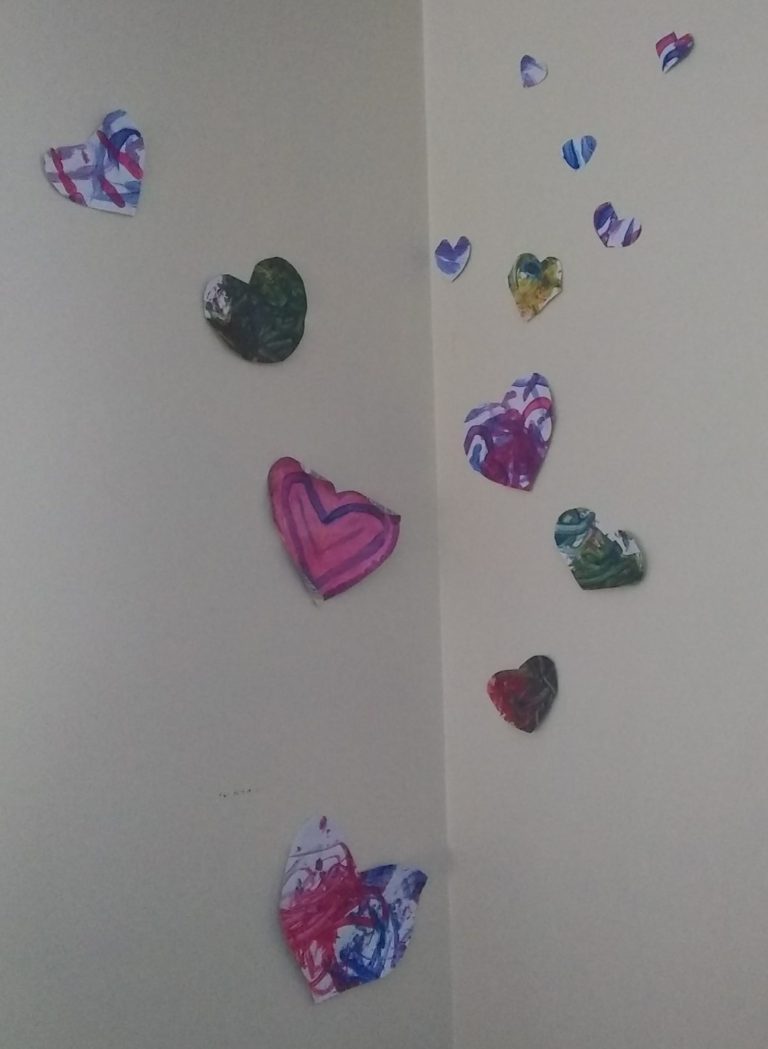
Finding the Balance
I actually believe both product and process art have their place. I think it’s important to be able to accept both types of art as well. We are going to want those mementos that you get to hold onto for years (or not, no judgement here).
So consider, instead of holding onto one as bad and one as good, think of the balance to be had in everything. If you do art 3 times a week, make sure at least 2/3 times it’s an open ended project, focused on the product.
Beyond Art
I have found if you want to work with your child creatively but in a more structured way, pivoting over to science activities is a really natural step. Yes, science can still be open ended in some ways, but often there is a specific order to do things in. You can grow your child’s mind in both of these areas. In fact, I would argue science and art balance each other perfectly.


